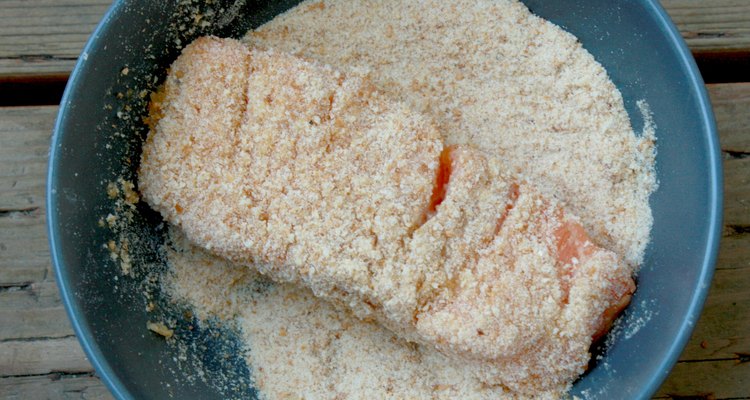
Breading and baking salmon offers an alternative way to prepare the fish from more common methods, such as grilling or broiling. Offering a slightly different flavor and texture, breading salmon allows for a crispy and hearty exterior while the inside flesh stays moist and tender. Since salmon is a naturally fat-rich fish, no additional oil is required when breading and baking, however, drizzling the final product with a fine stream of finishing oil, such as extra virgin olive oil, can enhance the fish with a mild, buttery flavor.
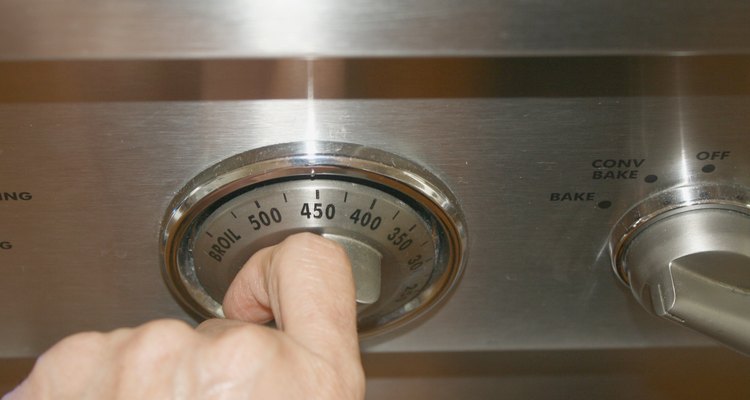
Preheat oven to 400 degrees Fahrenheit. Brush the bottom of a baking pan lightly with vegetable oil, such as corn, safflower or sunflower.
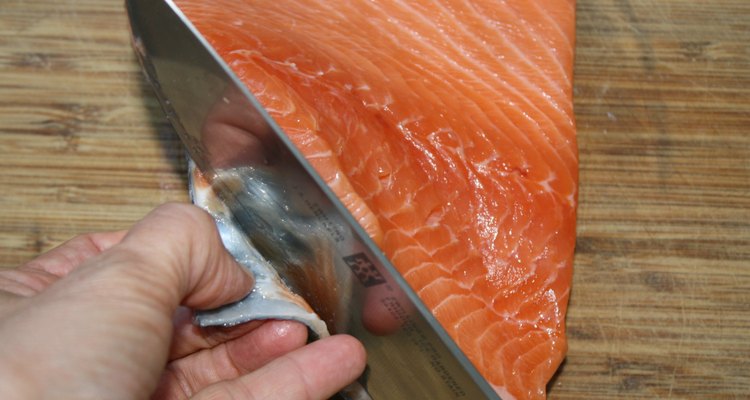
Skin the salmon if necessary: Lay the fish on a cutting board or other washable surface with the skin side down. Cover one end of the salmon, preferably the tail if applicable, in salt to provide a better grip. Make a cut with a sharp knife between the flesh of the fish and the skin as you firmly hold the salted end, and slide the knife through the length of the fish.
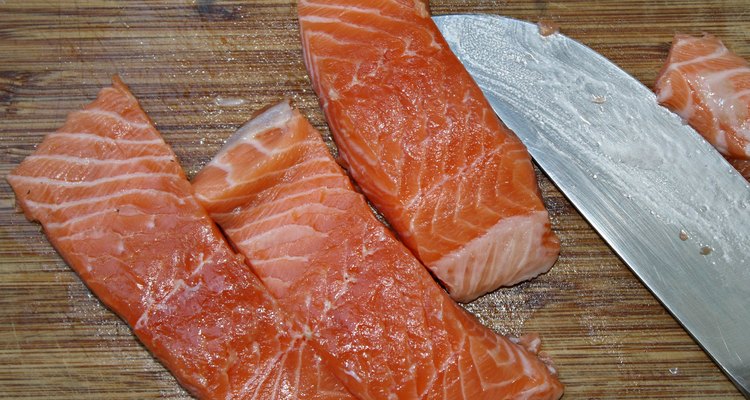
Cut the salmon across the grain into fillets.

Arrange three bowls in a row for the breading process. Place flour in the first bowl, which will help the eggs stick to the salmon. Break the eggs into the second bowl; two eggs should suffice for four to six 8-ounce fillets. Add a small amount of water to the eggs as a thinner, and whisk until the eggs are full beaten. Pour the bread crumbs into the third bowl, along with desired spices, such as salt, pepper, garlic onion and mustard seeds. Stir the dry ingredients until they are thoroughly mixed together.

Coat a salmon fillet with flour and then dip it into the eggs until it is completely coated. Place the salmon in the breadcrumb mixture; use a spoon to toss the fish, ensuring that it is fully coated.
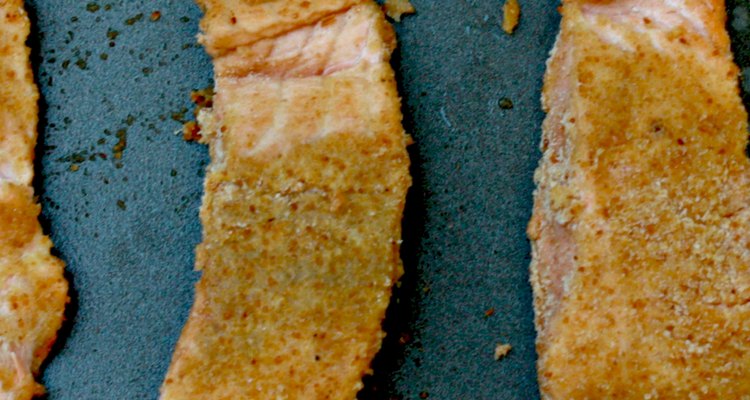
Lay each salmon fillet in the baking pan. Place the pan on a center rack in the oven. Cook the salmon for 10 to 15 minutes or until it is firm and opaque in color.
Related Articles

How to Bake Lingcod
How to Cook Atlantic Cod Fillets

Frying Whiting Fish Using No Flour
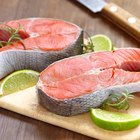
How to Cook Salmon Fillet with the Skin ...
How to Cook Seasoned Keta Salmon
How to Bake Salmon So It's Tender

How to Cook a Pickerel Fillet

Baking Partially Frozen Salmon
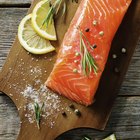
How to Cook Rolled Stuffed Salmon ...

How to Steam Codfish
How to Cook Ladyfish

How to Bake Fish With Panko Crumbs

How to Cook Barramundi in the Oven

How to Pan Fry Tasty Perch Fillets

How to Bake Bluegill Fillets

How to Fry Mullet
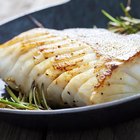
How Do I Pan Fry Fresh Fish With a ...

How to Cook Fish With Flour

How to Bake Breaded Mahi Mahi
How to Cook a Turbot in the Oven
References
Tips
- Keep an eye on the salmon fillets as they are baking; overcooking salmon is the easiest way to turn a tender piece of fish into something that is dry and chewy. Check the fish by poking a sharp knife into the thickest part of the fillet about two to three minutes before it is due to be ready; continue to check as needed. The breadcrumbs should be golden brown in color and the fish should be opaque and have a firm texture. Salmon that easily flakes apart is overcooked.
- Serve the salmon with a lemon-dill sauce, garlic-tartar sauce, creamy herb sauce or a mustard-dill topping.
Warnings
- Cooking time may vary depending on the thickness of your fish. Check the fish at 10 minutes and adjust cooking time if necessary.
Writer Bio
Beth Rifkin has been writing health- and fitness-related articles since 2005. Her bylines include "Tennis Life," "Ms. Fitness," "Triathlon Magazine," "Inside Tennis" and others. She holds a Bachelor of Business Administration from Temple University.
Photo Credits
Carmen Cordovez/Demand Media